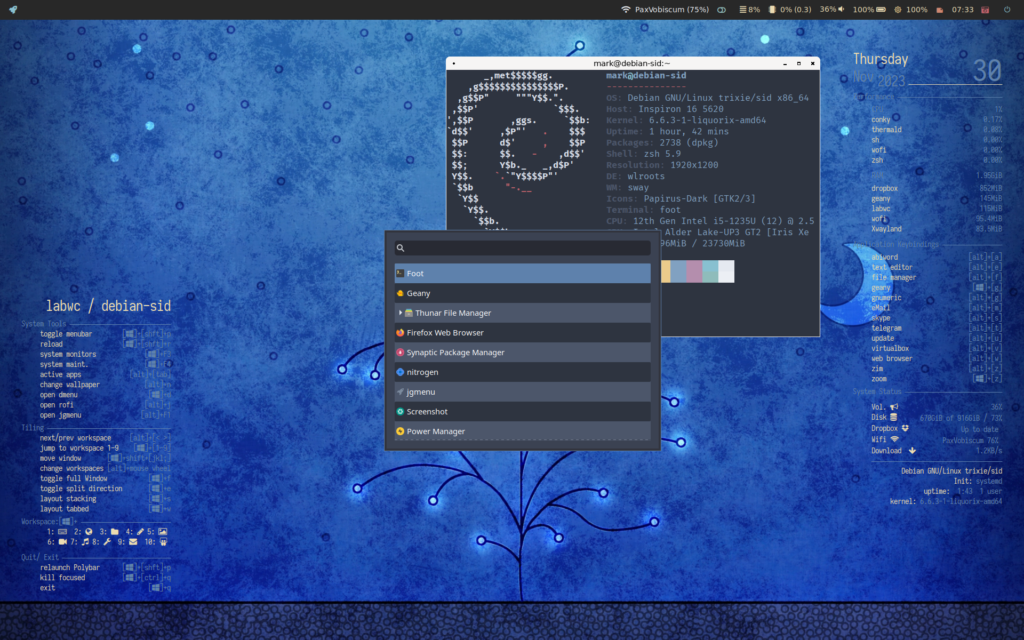For years now, Wayland has been a slow(?), erratic work. Even today, it continues to be a work in progress.
Given, I have been planning, researching and attempting to implement a viable running version of Wayland (mostly SwayWM). Through my work I have begun testing using this session environment regularly on Debian Sid (Unstable). After all that, I think it is about time I bring my findings and thoughts to this Knowledge-base.
I will attempt to keep this document updated, and revise it as I find notable new insights.
Based on my recent research, I have encountered the following articles. These articles each posit interesting thoughts.
- Wayland may soon overtake X11 in Linux GUIs • The Register
- Ubuntu Budgie Switches to an XFCE Approach to Wayland
- Xfce Wayland Update (2023)
- Xfce4 v 20 adds Wayland Support
- RHEL 10 is Dropping x11
There are, of course, many articles deriding Wayland, as well. Below is a notable rant. I personally find this type of post unhelpful as it is obviously inaccurate, shrill, and sounds too much like political propaganda. Nonetheless, it is worth a peak if only to see the amount of emotion focused on stamping out change. Yes, even in the tech-world we still have Luddites.
As part of my evaluation efforts, I have posted a number of progress report related articles and forum updates. Here are several:
- SwayWM on Debian (tutorial) – eirenicon llc (This tutorial offers details on my SwayWM implementation successes, work-arounds, and failures. It also includes links to dotifles, etc.)
- Wayland Native (Non-x11 Dependent Tools)
In addition to my work and progress with SwayWM (see the above SwayWM tutorial link for details), I have begun an attempt to install labwc on my Debian Sid install. I will provide a complete tutorial on that work, too; just not now. In the meantime, here’s a brief note and image of my labwc progress.
I have been trying to get labwc 0.6.6 (most current release) to build a version of labwc (Openbox style Desktop). Below is a screenshot, proof-of-life image. The bottom line seems to be that it looks like it ‘can be done’. There are some (many?) work-arounds needed to make it easier to use and appropriately Wayland; but, with an appropriate amount of hard work it seems viable. (If you stare too closely at the desktop screenshot, you’ll see what I mean.)

As mentioned above, there will be more to come, including a collection of what I view to be quality Wayland links.
If you have insights on your Wayland journey(s) to share with me, please use the contact page on this site to let me know.
This content is free to use, adapt, and share.
Knowledge and information should be open—please spread them far and wide.A few things to keep in mind:
- All of my work comes with absolutely no warranty, expressed or implied. However…
- It will almost certainly work until it breaks,
though I must admit it may never work or be useful—and that would be sad.- If/when it breaks, you can keep all the pieces.
- As for what you don’t like, it’s yours to do with as you will.
- If you find my materials helpful, both you and I will be happy (at least for a while).
- My advice is worth every penny you paid for it!
Full disclosure:
I use various AI systems to assist in developing my content.
If you’re curious about how I use them, feel free to check out:
The Revolutionary Impact of AI on Genealogy and Historical Research.
